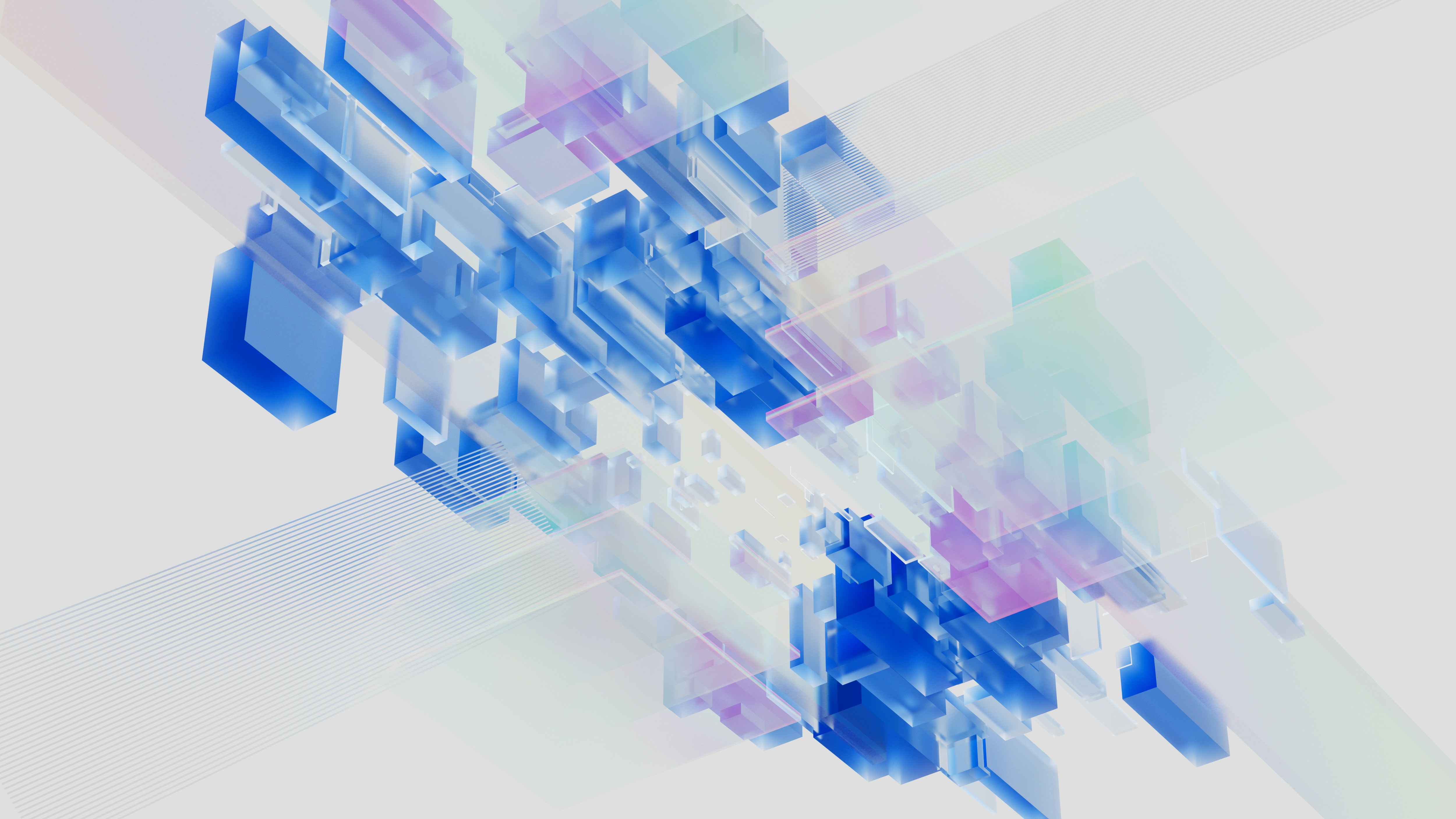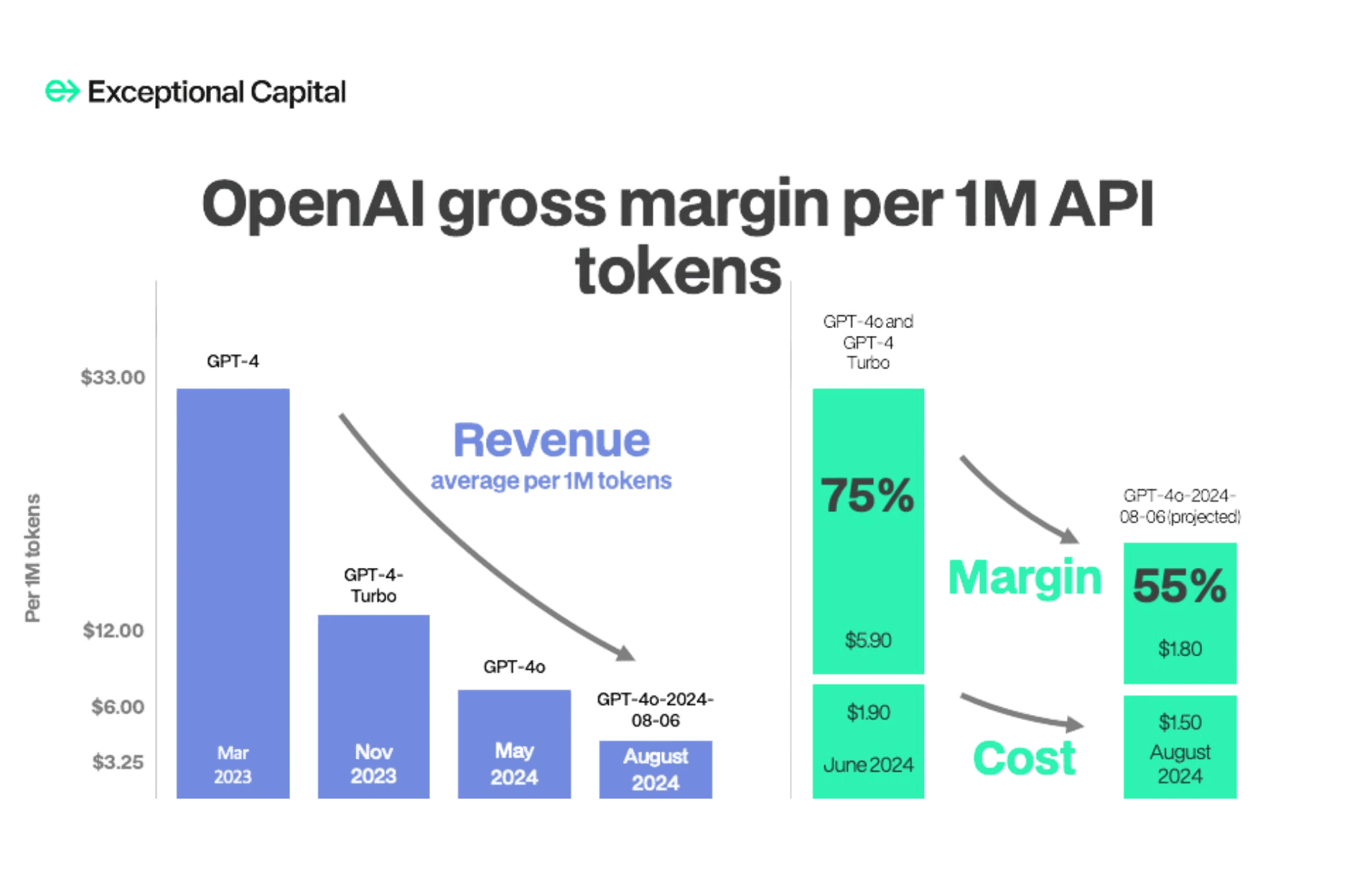Human + AI Experience at the Application Layer: A renewed mission

AI economics lies in the cost of inference—every user interaction incurs a real, measurable cost due to the computational power required to run these models.
This introduces a variable cost structure that most traditional software doesn’t have to deal with. Additionally, competitive pressures have led to incredible technological advancements showing continued signs of commoditization at the foundational model level.

In August of 2024, this post was written about the rough estimates of OpenAI’s GPT revenue and margin progression. The downward pressure of their pricing mechanism is directly related to the iterations and releases of models like llama, Claude and Gemini who are all comparable and cheap.
To take advantage of and manage this, many companies are turning to cheaper, smaller, task-specific models, edge computing, or caching strategies to optimize efficiency and keep costs down. This opens all sorts of doors when it comes to new users and interest in engaging with AI applications. However, this exercise came a number of months before the release of a foundational model that may potentially cause industry shaking vibrations. This particular release may push OpenAI and others to again undergo pricing pressure allowing for another jump in accessibility to application layer engagement.
Enter DeepSeek…
Deepseek’s ability to optimize how applications access, manage, and utilize data bridges a critical gap in the application layer. For startups, this means spending less time solving infrastructure challenges and more time building innovative, user-centric products. In the competitive landscape of modern software, the speed and efficiency enabled by tools like Deepseek can be the difference between success and falling behind.
We believe the software application layer is still experiencing its transformative moment, powered by foundational AI models with a renewed emphasis on human-centered design. Tools like OpenAI, Anthropic and now DeepSeek continue to push the boundaries of what’s possible, not just by redefining what’s technically viable - or now with DeepSeek, what is economically realistic - but by completely reshaping how we engage with software we are currently using and will use in the future.
Coding Agents
Let’s start with the Coding Agent space as it pertains to what’s technically feasible - Deepseek will likely make a big difference in helping companies like Cursor, Sweep.ai, Cognition, etc. manage costs and scale efficiently, especially as data demands grow. With Deepseek’s elastic storage, coding agent companies don’t have to worry about investing heavily in local infrastructure to handle larger datasets. By reducing unnecessary data transfers and relying on smart local caching, it helps cut down on expenses like cloud infrastructure fees while still delivering high-speed performance.
This means a company addressing agentic coding solutions like Sweep.ai can scale smoothly without breaking the bank, which is a huge win for any growing software platform, especially at the earlier stages.
It could also make working with massive datasets feel effortless, letting users dig deeper into their data without waiting for things to load or process. And as these companies grow, they can confidently handle larger, more complex projects without slowing down, making it even more valuable for teams with heavy workloads.
The lives of developers potentially become easier and less muddled too. It speeds up the process of building and testing new features, especially ones that rely on fast, reliable data access. Developers don’t have to spend time wrestling with infrastructure challenges, which means they can focus on creating new functionality and improving the platform. By streamlining the backend, Deepseek (and likely others will follow suit) helps coding agents stay ahead of the curve, delivering features faster and with less hassle.
AI Economics
Now, shifting gears to what is now potentially possible due to better AI economics - DeepSeek has hastened access to a myriad of avenues for adoption (if we take certain speculations and reports at face value in regards to how much it cost to train R1). This drastic change in cost inevitably makes more users curious about and willing to experiment with these tools (expanding the application layer TAM, how much exactly is yet to be determined) given price no longer being a substantial barrier. If that barrier continues to diminish further, people will likely adopt and hopefully meld these tools into their workflows. However, capturing this new influx of curiosity is paramount.
How does one capture it? It’s no secret that foundational models have opened up capabilities like natural language understanding, real-time adaptation, and generative reasoning to more people and organizations than ever before. But the most exciting development isn’t just in the technology itself; it’s in how these applications are putting humans at the center of the equation, amplifying what we’re capable of rather than trying to replace us. This is called the HAX: Human AI/Agentic Experience.
HAX Defined
The explosive returns on effort and productivity happens when humans and AI collaborate seamlessly, creating something that neither could achieve alone. This vision is already being tackled by companies like Primetime, Cove, Guse and Perhaps, which are fundamentally rethinking how we interact with technology and scaling human creativity, collaboration and expertise in ways that felt out of reach just a few years ago. The common thread amongst these companies is their deep focus on the UI/UX between humans and AI.
We'll take Cove as an example, which takes personalization to an entirely new level. Designed as an AI assistant that deeply integrates into individual workflows, Cove learns what you need, contextualizes the information it surfaces, and delivers insights that actually help you get things done. It automates the repetitive and the mundane while enabling you to focus on creative and strategic work—the things humans do best. It’s a great example of how foundational AI, when paired with thoughtful design, can elevate productivity without losing the personal, human touch.
HAX for the Future
These platforms reflect a broader shift in software. Applications are no longer static tools; they’re becoming dynamic collaborators that adapt to what you need, learn from how you work, and grow with you, your team and your company over time.
Foundational models are the backbone of this shift, enabling software that’s not just smart, but adaptable and scalable in entirely new ways. They unlock opportunities far beyond incremental improvements—this is about rethinking how software functions entirely. What is even more exciting is the idea of having tools like Cursor or Sweep.ai living within these AI canvas style companies like Primetime or Cove supercharging technical and business productivity simultaneously. The DeepSeek news has had a gravitational effect on both the technical amplification as well as the economic democratization of these powerful tools.
The future of software is collaborative within human + human interactions as well as human + AI and AI + AI. It’s one where humans and AI work side by side to solve problems, unlock opportunities, and drive innovation at an unparalleled pace. For founders and investors, now is the time to lean into this space. The tools we build today—those that amplify and augment human potential—are the ones that will define the software landscape of tomorrow. Let’s build together!




